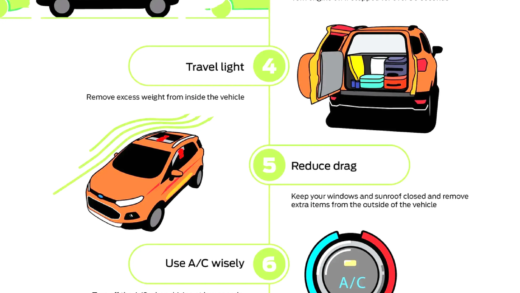This comprehensive guide covers essential aspects of car insurance, including types of coverage, deductibles, factors affecting rates, discounts, filing claims, and post-accident steps. It also provides strategies for selecting the best insurance for individual needs.
Types of Car Insurance Coverage
Car insurance is essential for all drivers, providing financial protection in case of accidents or damage. Understanding the types of car insurance coverage is crucial for selecting the right policy. Here are the primary types:
- Liability Coverage: This is the most basic type of car insurance. It covers damages to other vehicles and injuries to other people if you are at fault in an accident. Every state requires a minimum amount of liability coverage.
- Collision Coverage: This type pays for damage to your own car after a collision, regardless of who is at fault. It’s particularly useful for newer or more expensive vehicles.
- Comprehensive Coverage: This covers non-collision-related incidents, such as theft, vandalism, or natural disasters. Comprehensive coverage is often recommended for those who want full protection.
Choosing the right coverage depends on individual needs, budget, and the value of your vehicle. Make sure to assess your specific situation to find the most suitable option.
How Car Insurance Deductibles Work
Car insurance deductibles play a significant role in determining your premium and the amount you pay out of pocket when filing a claim. A deductible is the amount you agree to pay before your insurance kicks in. For example, if you have a $500 deductible and your repair costs are $2,000, you pay $500, and your insurer covers the remaining $1,500.
Higher deductibles generally lower your monthly premium, while lower deductibles lead to higher premiums. It’s essential to balance your deductible with your financial comfort. Consider these points:
- Assess how much you can afford to pay out of pocket.
- Evaluate how often you might need to file a claim.
- Choose a deductible that aligns with your overall financial strategy.
Understanding how deductibles work can save you money and stress in the long run.
Factors Affecting Car Insurance Rates
Several factors influence car insurance rates, and understanding them can help you find the best deal. Here are some key factors:
- Age: Younger drivers typically face higher rates due to lack of experience.
- Location: Where you live affects your rate. Urban areas may have higher rates due to increased accident and theft rates.
- Driving History: A clean driving record can significantly lower your premiums, while accidents or traffic violations can raise them.
- Credit Score: Insurers often consider your credit score, as it can indicate risk.
By understanding these factors, you can take steps to improve your insurance rates, such as maintaining a clean driving record and shopping around for the best coverage.
Comparing Car Insurance Quotes
When it comes to car insurance, comparing quotes is essential to find the best deal. Here are effective strategies to help you through the process:
- Gather Multiple Quotes: Reach out to at least three different insurance providers. This gives you a range of options to choose from.
- Use Online Comparison Tools: Websites like Insure.com allow you to compare rates from various insurers quickly.
- Check Coverage Levels: Ensure that the coverage levels are similar across quotes. Look for liability limits, deductibles, and any additional coverage options.
- Look for Discounts: Ask about available discounts. Many insurers offer lower rates for safe driving records or bundling policies.
- Read Reviews: Check customer reviews and ratings to assess the reliability of the insurer. A lower rate is not worth it if the company has poor customer service.
By following these tips, you can effectively compare car insurance quotes and secure the best deal for your needs.
Car Insurance Discounts
Finding ways to save money on car insurance is always a plus. Many insurance companies offer various discounts that can significantly lower your premium. Here are some common discounts:
- Safe Driver Discount: If you maintain a clean driving record without accidents or violations, you might qualify for a safe driver discount.
- Multi-Policy Discount: Bundling your car insurance with other policies, such as home or renters insurance, can lead to substantial savings.
- Good Student Discount: Students who maintain a certain GPA can receive discounts, recognizing their responsible behavior.
- Low Mileage Discount: If you drive less than a specified number of miles per year, some insurers offer discounts as a reward for lower risk.
- Military or Professional Discounts: Certain professions or military service can qualify for exclusive discounts.
Be sure to ask your insurance provider about available discounts. Taking advantage of these can help you save money on your premium while ensuring you have the coverage you need.
Filing a Car Insurance Claim
Filing a car insurance claim can seem daunting, but knowing the steps can ease the process. Here’s a step-by-step guide:
- Contact Your Insurer: Notify your insurance company as soon as possible after the incident. Most companies have a 24/7 claims hotline.
- Provide Necessary Information: Be ready to give details about the accident, including date, time, location, and parties involved.
- Document the Incident: Take pictures of the damage and gather witness information if possible. This documentation can support your claim.
- Complete the Claim Form: Fill out your insurer’s claim form accurately, providing all requested information.
- Follow Up: After submitting your claim, keep in touch with your insurer to check on the status and provide any additional information they may need.
Understanding this process can prepare you for a smoother experience when you need to file a claim. Knowing what to expect reduces stress and ensures you get the compensation you deserve.
What to Do After a Car Accident
After a car accident, knowing the immediate steps to take is essential for ensuring safety and protecting your rights. Here’s a straightforward guide:
- Ensure Safety: First, check for injuries. If anyone is hurt, call emergency services immediately. Your health is the top priority.
- Move to Safety: If it’s safe to do so, move your vehicle to the side of the road to prevent further accidents.
- Call the Police: It’s crucial to report the accident. The police will create an official report, which can be vital for insurance claims.
- Exchange Information: Gather details from the other driver(s), including names, contact information, insurance details, and license plate numbers.
- Document the Scene: Take photos of the accident scene, vehicle damage, and any relevant road conditions. This evidence can help support your claim.
- Notify Your Insurance: Contact your insurance provider to report the accident and begin the claims process. Provide them with all necessary information and documentation.
- Seek Medical Attention: Even if you feel fine, consider seeing a doctor. Injuries may not be immediately apparent.
Handling the aftermath of an accident can be stressful, but following these steps will help you stay organized and prepared.
Choosing the Right Car Insurance for Your Needs
Finding the best car insurance requires careful consideration of your personal circumstances. Here are strategies to help you select the most suitable policy:
- Assess Your Needs: Determine the type of coverage you require based on your vehicle, driving habits, and personal financial situation. For instance, if you drive an older car, you might opt for liability only.
- Compare Quotes: Always compare quotes from multiple insurers. This allows you to find the best price for the coverage you need. Use online tools or speak to insurance agents for assistance.
- Consider Customer Service: Research the reputation of insurance companies regarding their customer service and claims process. Reviews can provide insights into their reliability.
- Look for Discounts: Inquire about available discounts that you may qualify for, such as safe driver discounts or multi-policy discounts. These can significantly lower your premium.
- Review Policy Terms: Understand the terms and conditions of each policy. Look for hidden fees, exclusions, and the claims process to avoid surprises later.
By taking the time to evaluate your options and understand your insurance needs, you can find a policy that fits both your budget and your requirements.





Comments are closed.